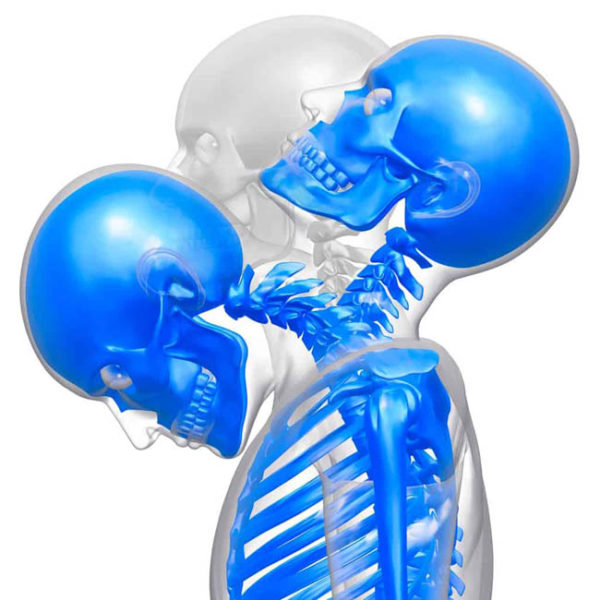The term whiplash is the term used to describe the injuries that result from a rapid back and forth motion of the neck. These injuries can occur during a car crash, sports accident, or during a slip and fall. The most common symptoms of a whiplash injury are neck pain, headaches, and radiating pain into the shoulders, arms, and hands.

Why it Matters:
Pain after whiplash happens when the delicate ligaments supporting your neck have been damaged, and new research indicates that even low-speed crashes can create the force necessary to cause pain and injury. Whiplash can also cause damage to your facet joints and spinal discs by stretching them beyond their normal range of motion. Depending on the type of accident, we may choose to take x-rays or an MRI of your neck to evaluate your injuries better.
- Over 1.5 million whiplash injuries occur each year, many from low impact collisions.
- Whiplash can cause neck pain and headaches due to injuries to the facet joints, spinal discs, ligaments, tendons, and muscles.
- Chiropractic adjustments and massage have been recommended at effective treatment for the management of neck pain after whiplash.
Next Steps:
A stiff neck after an accident is a good clue that a whiplash injury may have occurred. Keep an eye out for swelling and bruising, which can take up to 24 hours to develop. In some cases, the partial tearing of the muscles, tendons, or ligaments around your spine can take several months to heal. Remember that getting an evaluation, and the proper care early on can help you reduce your pain and heal better and faster. Know that we’re here to support you on your road to recovery.
Science Source:





